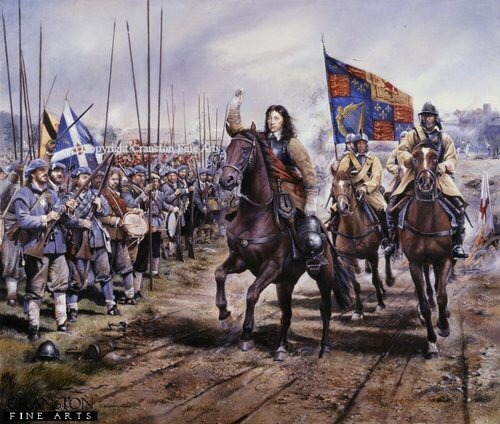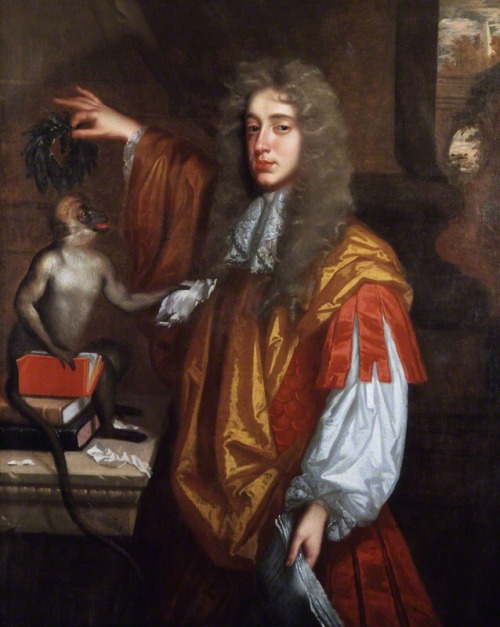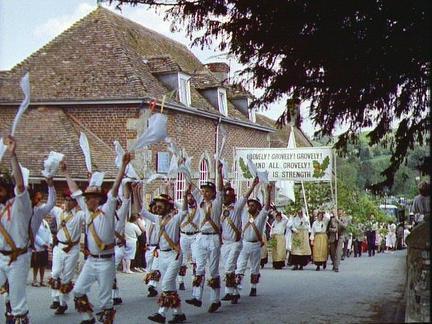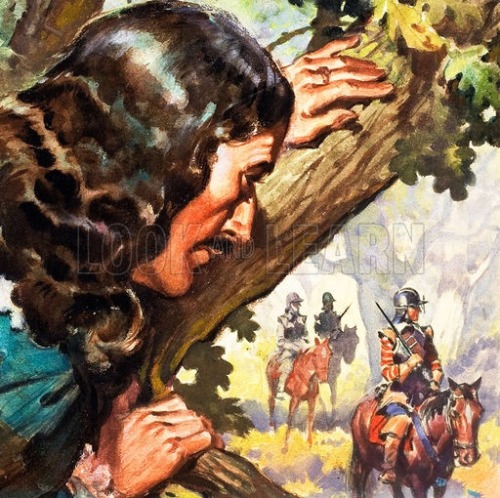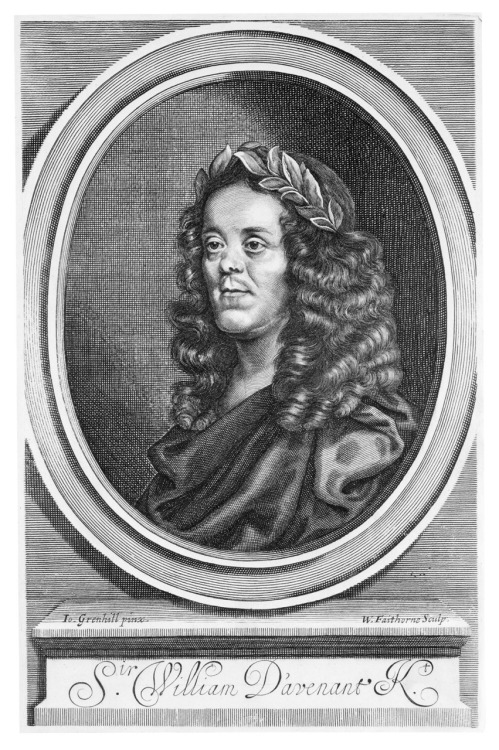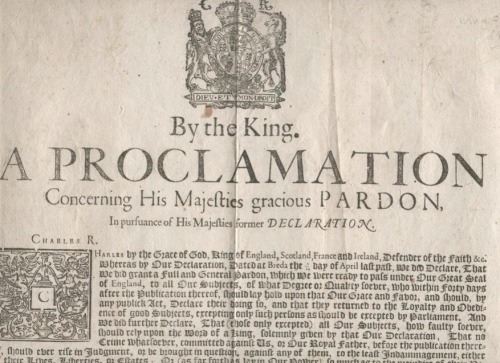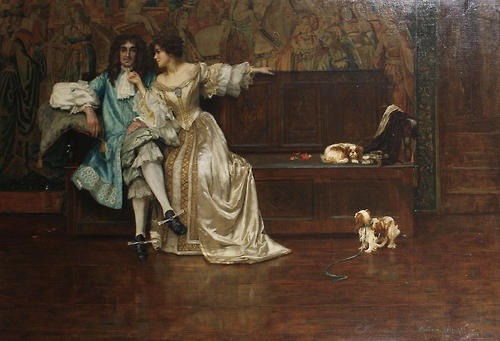#charles ii
John Wilmot 2nd Earl of Rochester, poet, libertine and member of Charles II “Merry Gang” died on this day in 1680 aged just 33.
Post link
Slip ware dish commemorating Charles II famous escape from the Roundheads in 1651 By William Talor 1680-85
Estimated to be worth £45,000-60,000, it depicts the moment in the English Civil War when the 21 year old Charles II hid in a huge oak tree in Boscobel House, Shropshire to escape the attentions of marauding Roundheads. He had been soundly beaten the day before at the Battle of Worcester on 3 September 1651 by Cromwell’s New Model Army and remained perched in the tree for several hours until the danger passed. With the Civil War effectively over, Charles gave up the struggle to regain the throne and escaped to mainland Europe where he lived until the Restoration of the Monarchy in 1660.
The tale of the Royal Oak gripped the public imagination and Pepys recorded in his diary that the King has related it to him personally. The dish was made by William Talor in the early 1680s and is only one of four dishes by the potter on this theme to have survived.
Post link
↳ 29 May 1660 AD ‘Oak Apple Day’ - Restoration of the monarchy in England. From Pepys diary “Parliament had ordered the 29th May, the King’s birthday, to be for ever kept as a day of thanksgiving for our redemption from tyranny and the King’s return to his Government, he entering London that day.”
Post link
Oak Apple Day
Oak Apple Day or Royal Oak Day was a holiday celebrated in England on 29 May to commemorate the restoration of the English monarchy, in May 1660. In some parts of the country, the day was also known as Shick Shack Day, Oak and Nettle Day or Arbor Tree Day.
In 1660, Parliament declared 29 May a public holiday:
“Resolved, That a Bill be prepared for keeping of a perpetual Anniversary, for a Day of Thanksgiving to God, for the great Blessing and Mercy he hath been graciously pleased to vouchsafe to the People of these Kingdoms, after their manifold and grievous Sufferings, in the Restoration of his Majesty, with Safety, to his People and Kingdoms: And that the Nine-and-twentieth Day of May, in every Year, being the Birth Day of his Sacred Majesty, and the Day of his Majesty’s Return to his Parliament, be yearly set apart for that Purpose…” , -Journal of the House of Commons: volume 8: 1660-1667
The public holiday, Oak Apple Day, was formally abolished in 1859, but the date retains some significance in local or institutional customs. It is, for example, kept as Founder’s Day in the Royal Hospital Chelsea (founded by Charles II in 1681). During the course of the day the statue of Charles II in Figure Court is partly shrouded in oak leaves, and all participants in the Parade and spectators wear sprigs of oak leaves to commemorate the King’s escape from forces after the Battle of Worcester in 1651. The statue was re-gilded in 2002 to commemorate the Golden Jubilee of Queen Elizabeth II.
Traditional celebrations to commemorate the Oak Apple Day often entailed the wearing of oak apples (a type of plant gall, possibly known in some parts of the country as a shick-shack) or sprigs of oak leaves, in reference to the occasion after the Battle of Worcester in September 1651, when the future Charles II of England escaped the Roundhead army by hiding in an oak tree near Boscobel House. Anyone who failed to wear a sprig of oak risked being pelted with bird’s eggs or thrashed with nettles.
These ceremonies, which have now largely died out, are perhaps continuations of pre-Christian nature worship. The Garland King who rides through the streets of Castleton, Derbyshire, at the head of a procession, completely disguised in a garland of flowers, which is later affixed to a pinnacle on the parish church tower, can have little connection with the Restoration, even though he dresses in Stuart costume. He is perhaps a kind of Jack in the Green and the custom may have transferred from May Day when such celebrations were permitted again after having been banned by the Puritans.
Events still take place at Upton-upon-Severn, Northampton, Aston on Clun in Shropshire, Marsh Gibbon in Buckinghamshire, Great Wishford in Wiltshire when villagers gather wood in Grovely Wood, and Membury in Devon. The day is generally marked by re-enactment activities at Moseley Old Hall, one of the houses where Charles II hid in 1651.
At some Oxford and Cambridge halls a toast is still drunk to celebrate Oak Apple Day.
Post link
‘The Works of Sir William Davenant’, frontispiece, printed by TN for Henry Herringman, London, 1673.
In 1656, when Cromwell who opposed theatrical performances was still in power, William Davenant succeeded in producing ‘The Siege of Rhodes’ in his home in an all-sung version. He staged it with moveable scenery arranged in perspective, which was to prove highly influential.
According to legend, Davenant was the illegitimate son of William Shakespeare. He contributed to the last of the Stuart masques and was a fervent Royalist. After Charles II was restored to the throne in 1660, Davenant and Thomas Killigrew were granted royal patents, which gave them virtual monopoly over presenting drama in London. These monopolies were not revoked until the 19th century.
Post link
By the King, Charles II
A Proclamation concerning His Majesties gracious Pardon in pursuance of His Majesties former Declaration dated June 15th 1660.
The crucial Proclamation of the Restoration – Charles had agreed to Parliament’s requirement that he should offer a pardon to all those who had fought against the Royalist cause in the Civil War but only as long as they declared their allegiance to the restored Monarchy.
Post link
8 July 1663

On 8 July 1663, King Charles II granted the royal charter for the recognition of the Rhode Island colony. The colony had been established in 1644 when several growing towns incorporated together. After the restoration of royal rule, however, the colony sought royal recognition. One of the original towns that incorporated was Providence Plantation, and its founder, Roger Williams, sought to create a town that recognized liberty of conscience and religious freedom. Because Charles II was a Catholic-sympathetic king in a heavily-Protestant England, he was happy to grant the Royal Charter of 1663, giving the Colony of Rhode Island and Providence Plantations an elected governor and legislature. The charter remained the governing charter of Rhode Island for 180 years, making it the the oldest constitutional charter in the world at the time of its retirement in 1843.

big 1666 vibes
Nan va Halva (Breads and Sweets)
Author: Muhammad Baha’ al-Din al-‘Amili (1547–1620)
Object Name: Illustrated manuscript
Date: ca. 1690
Geography: India, Deccan, Aurangabad
Culture: Islamic
Medium: Ink, opaque watercolor, and gold on paper Binding: leatherThe Metropolitan Museum
The Metsays:
The text of this book is a series of moralizing poems on the merits of the ascetic life, three of which are illustrated. The painting illustrates the parable of a recluse who accepts bread from an infidel (depicted here as the English monarch Charles II) and is chided by a dog. The beautiful birds in the margin of the page compete for attention with the witty illustration.
Post link
This is Nell Gwynn, mistress to Charles II of England. Born in a brothel, she became a prostitute and then an actress (the two weren’t really mutually exclusive at the time) before catching the eye of the king. Her wit and high spirits kept her close to Charles until his death.
Her sharp tongue was legendary. When her chief rival, Louise de Kéroualle, Duchess of Portsmouth, cattily remarked that Nell was dressed richly enough to be a queen, Nell shot back, “You are certainly right, Madam, and I am whore enough to be a duchess!”
Once when her coachman got into a fight with another man who had called her a whore, Nell intervened by saying, “I am a whore. Find something else to fight about!”
Her most famous quip came about when she was passing through the streets of Oxford in her coach and a mob, mistaking her for her rival, the Catholic Louise de Kéroualle, began to shout at her. Nell put her head out the window, smiled, and said, “Good people, you are mistaken; I am the Protestant whore.”
Source: The Sexual History of London
Post link

